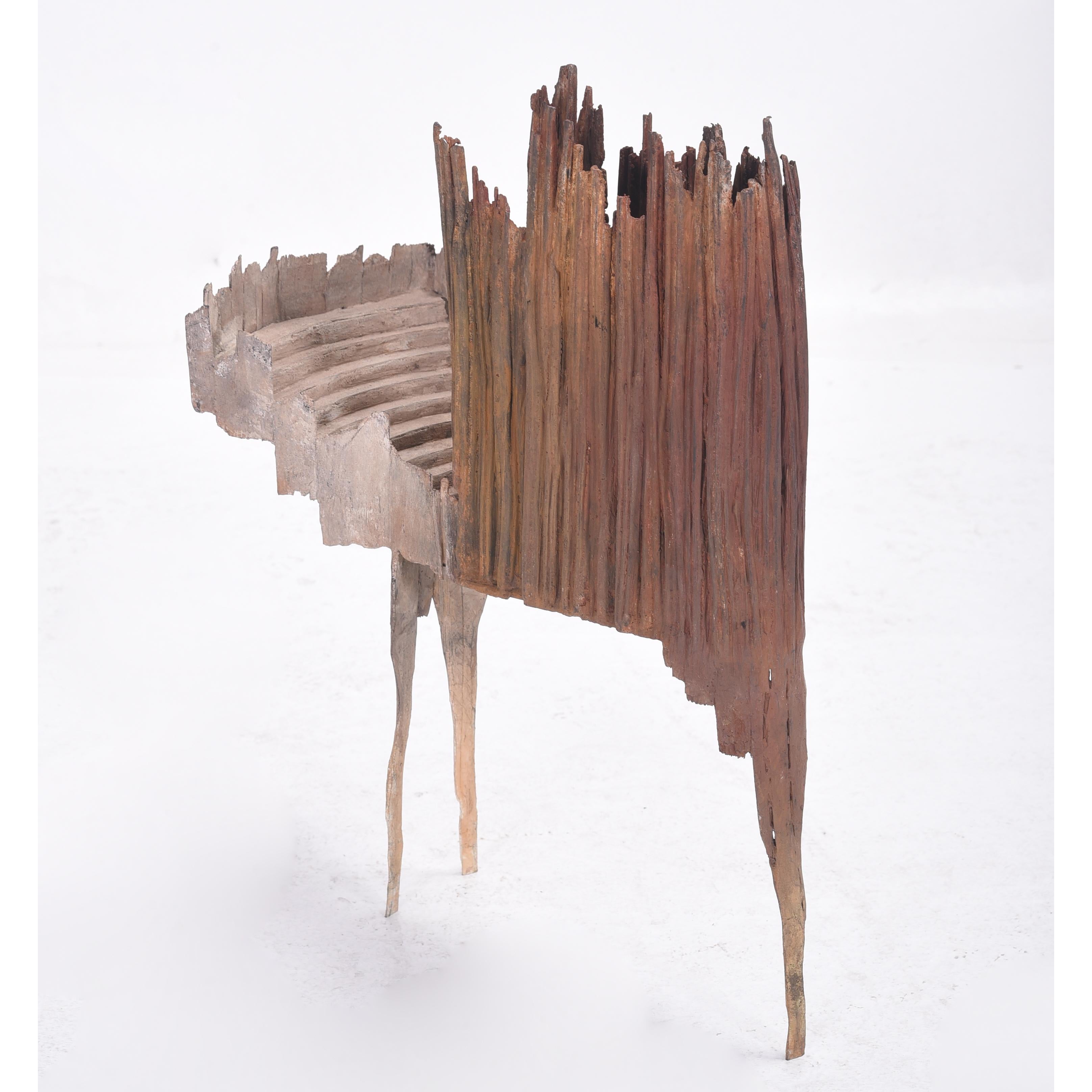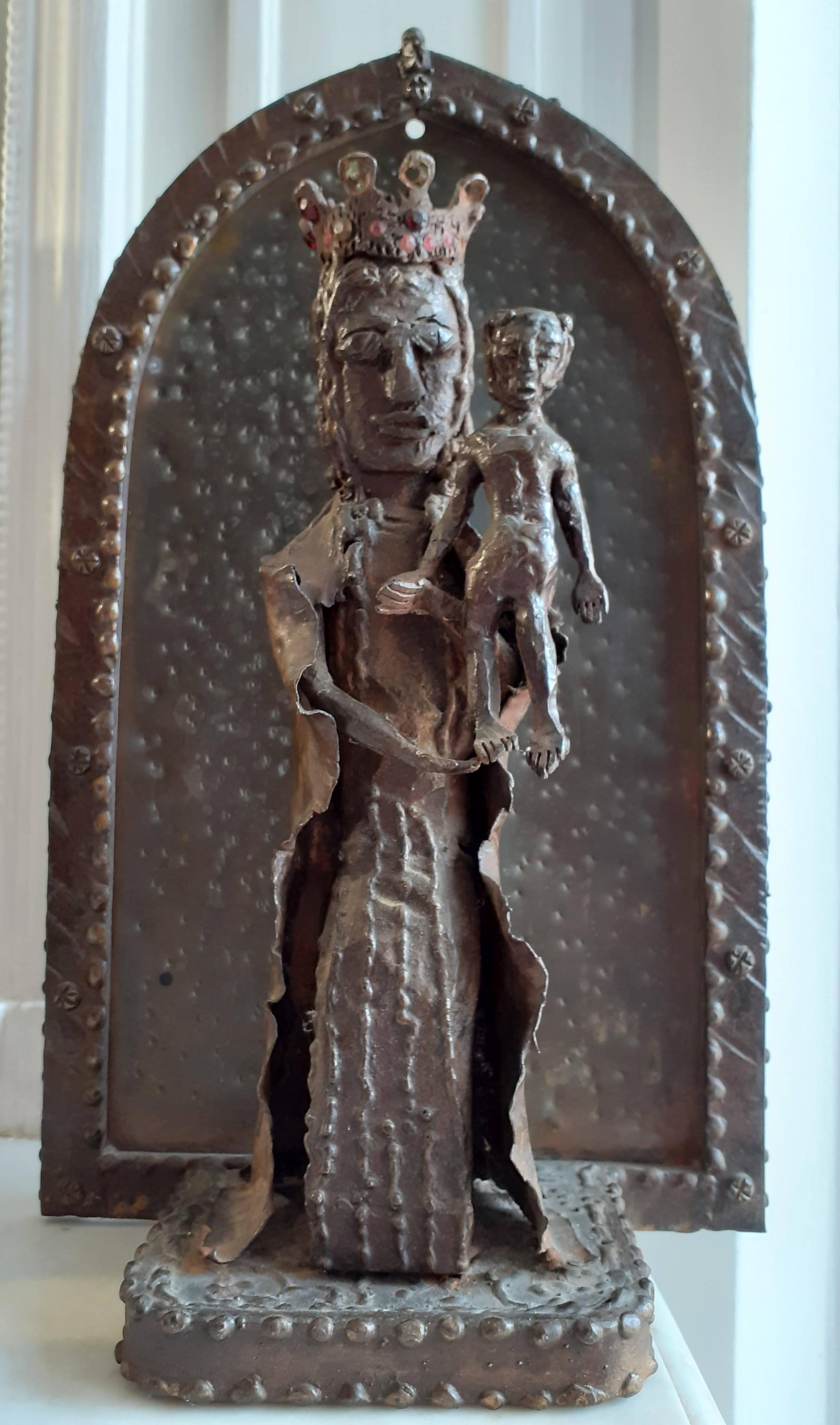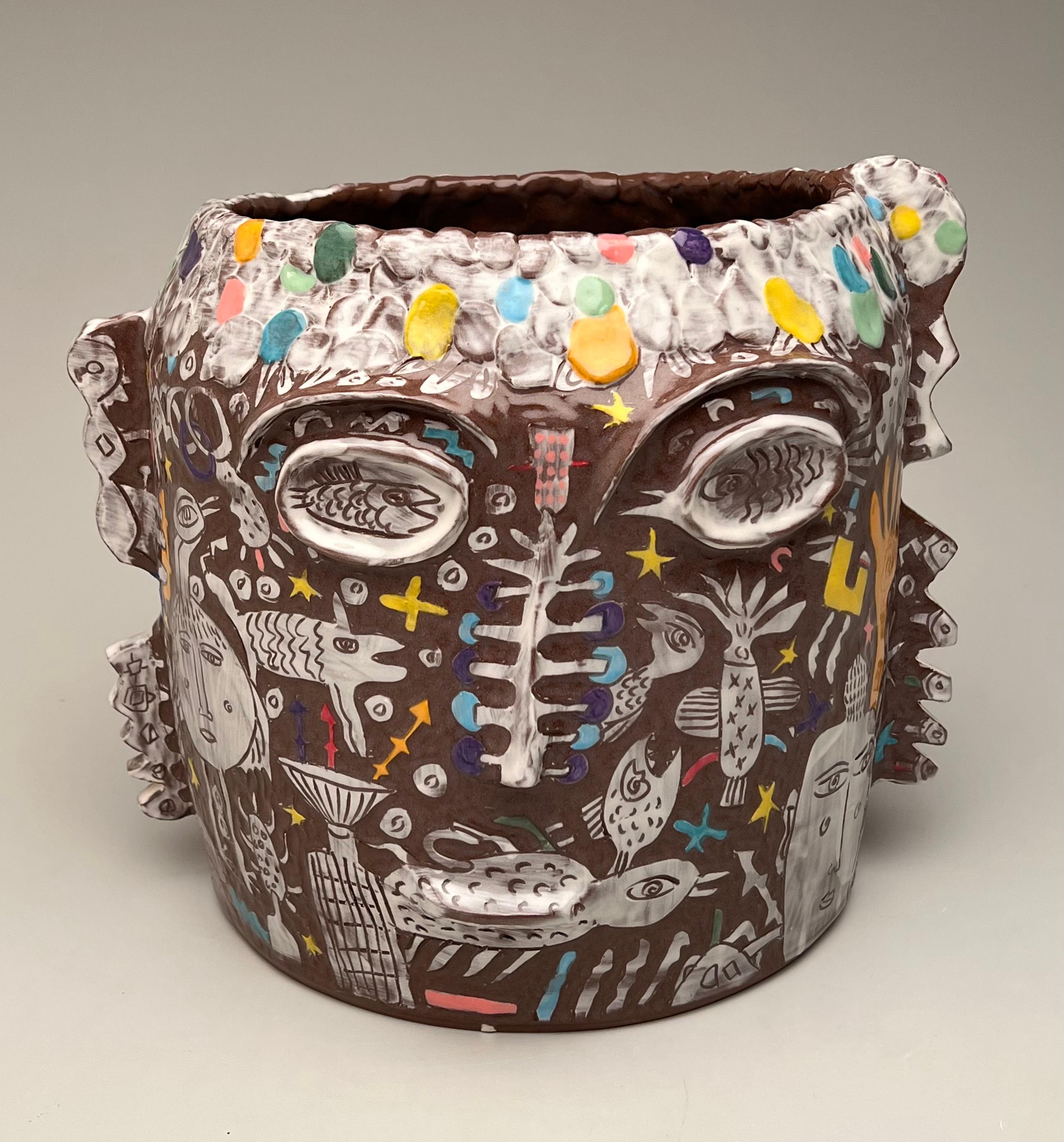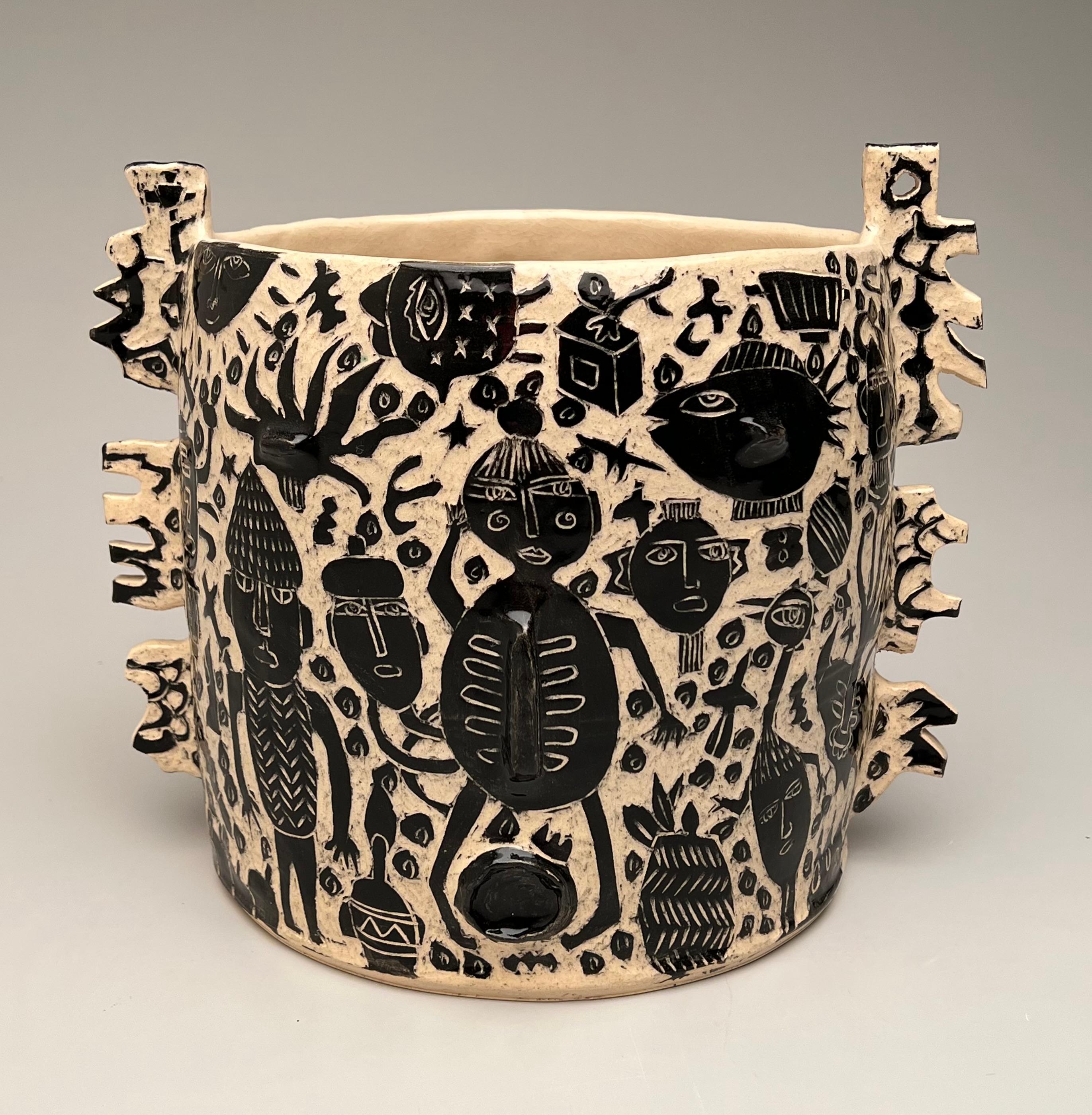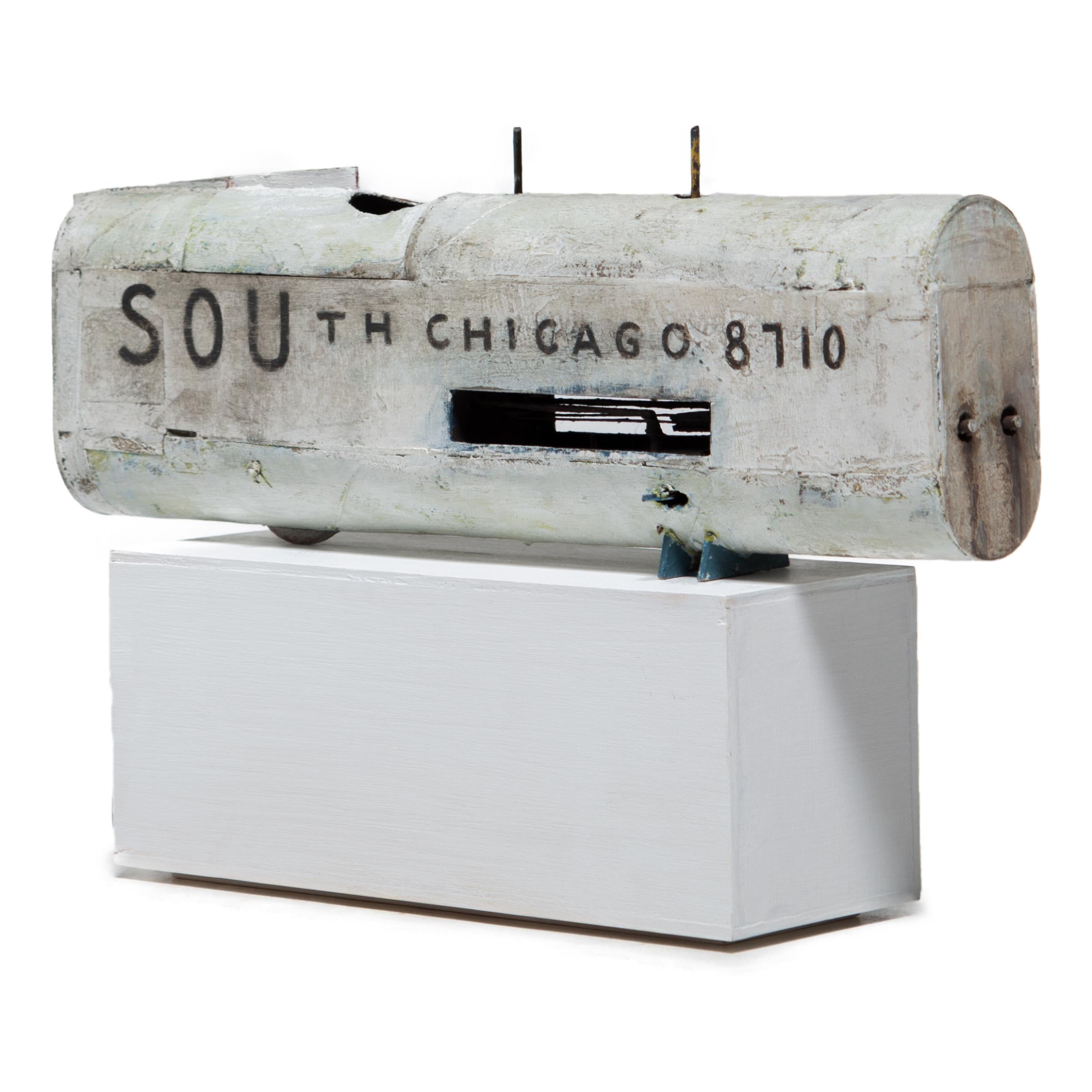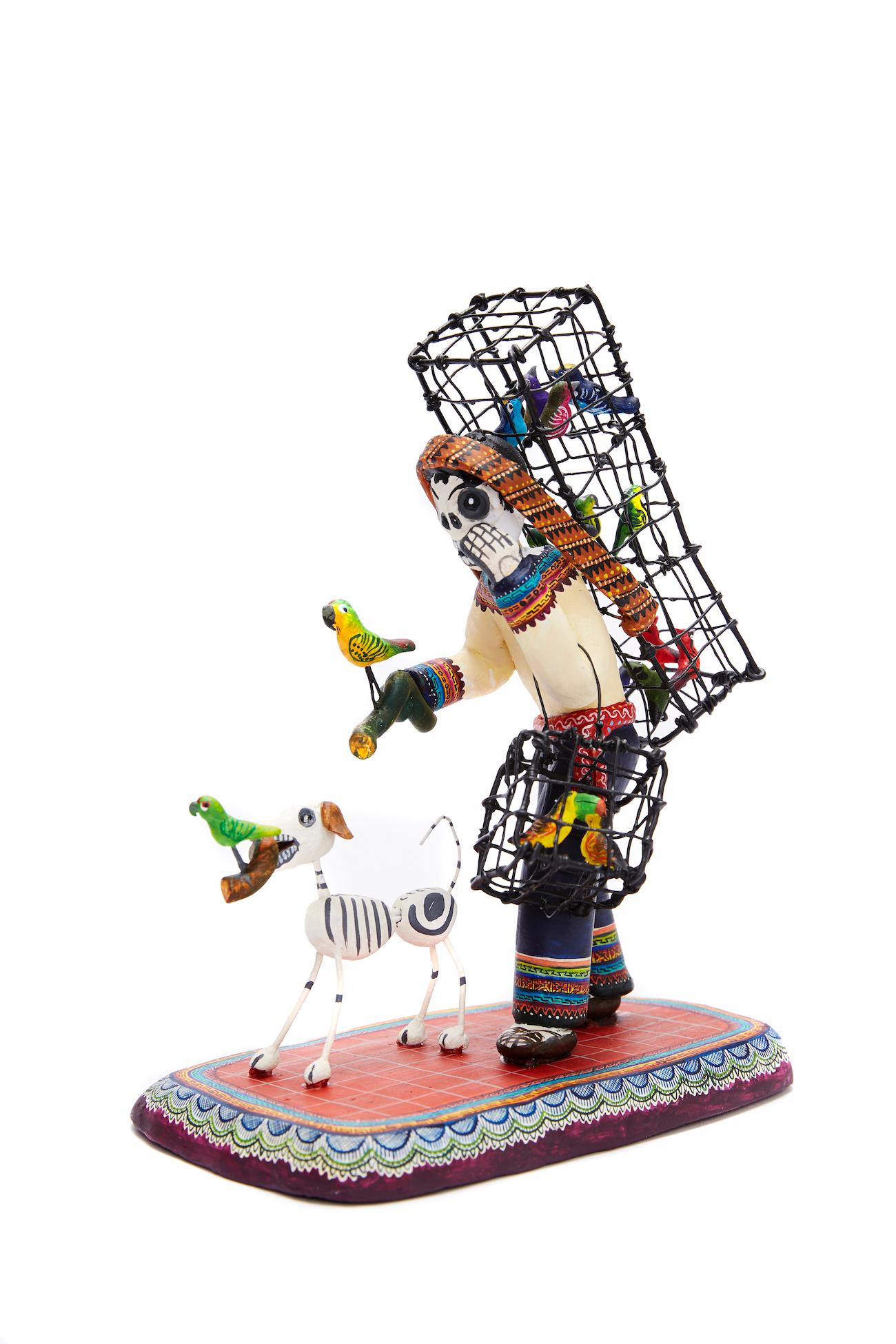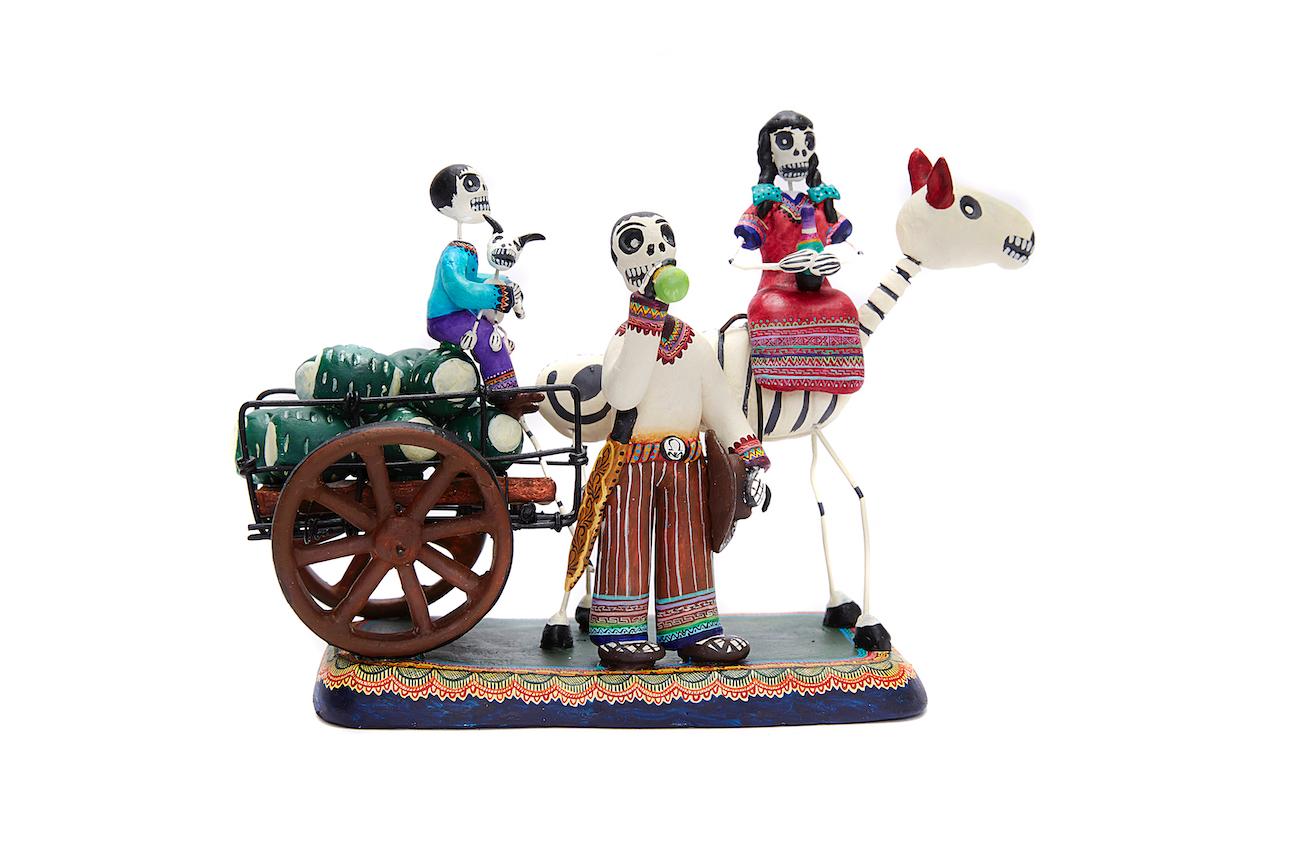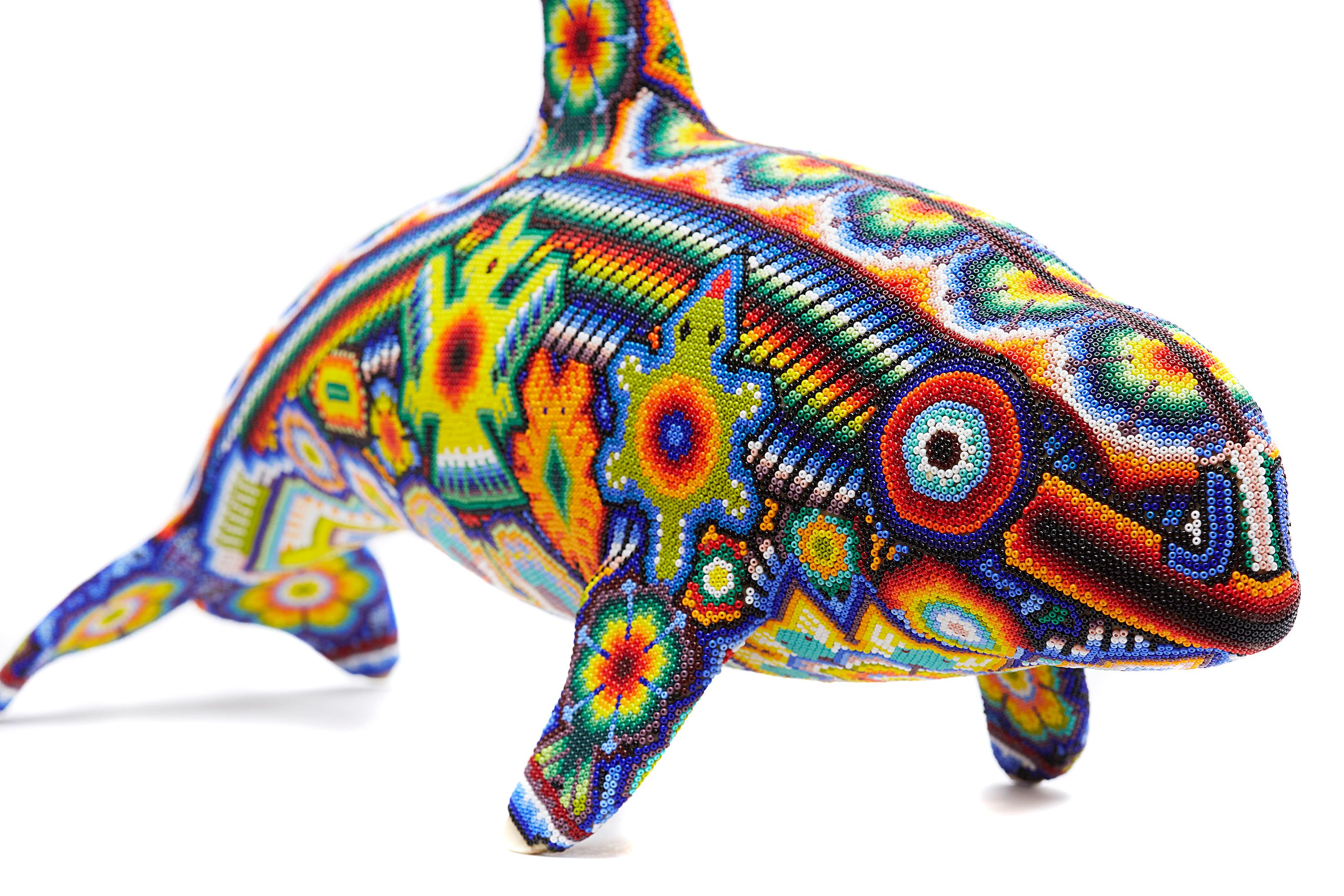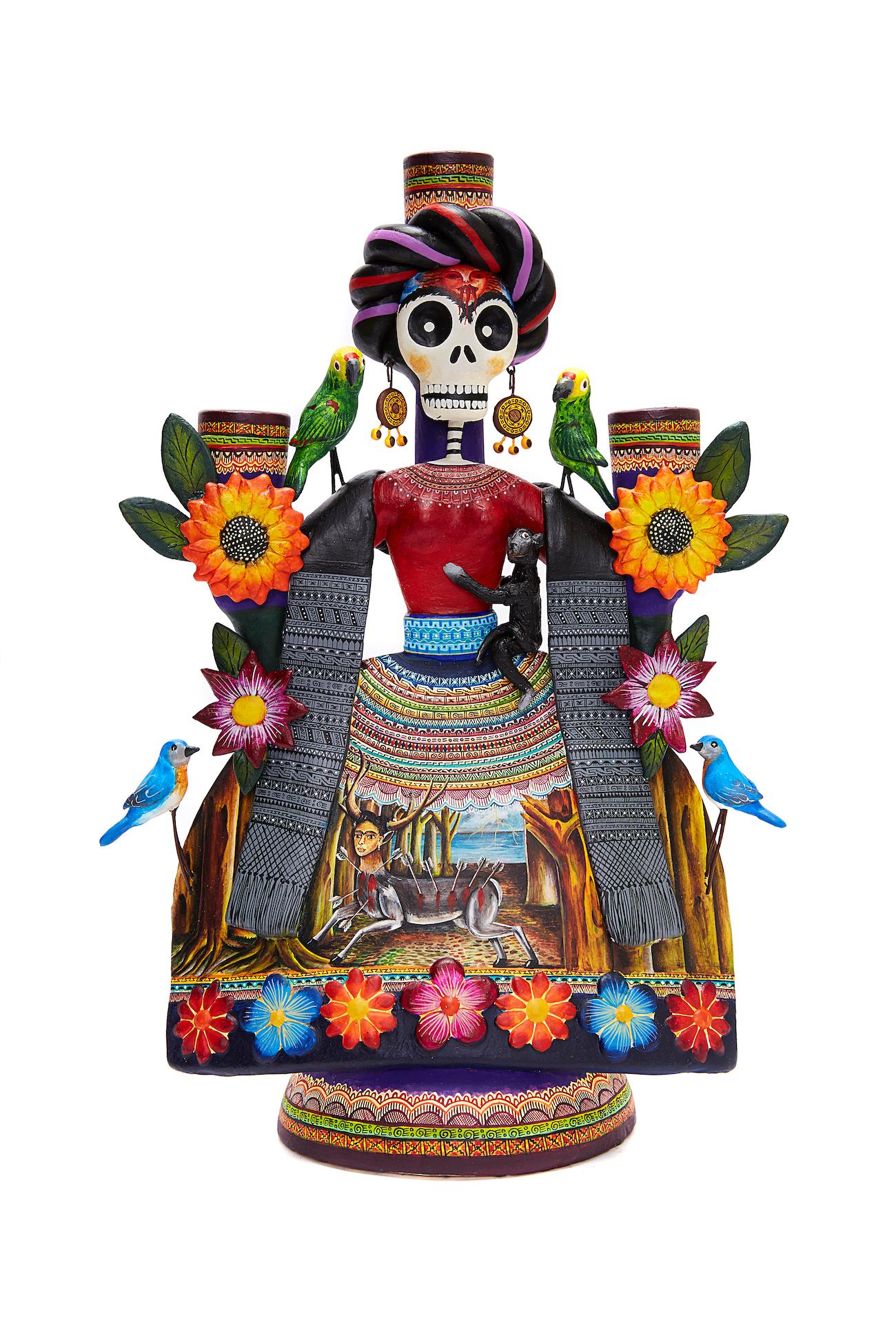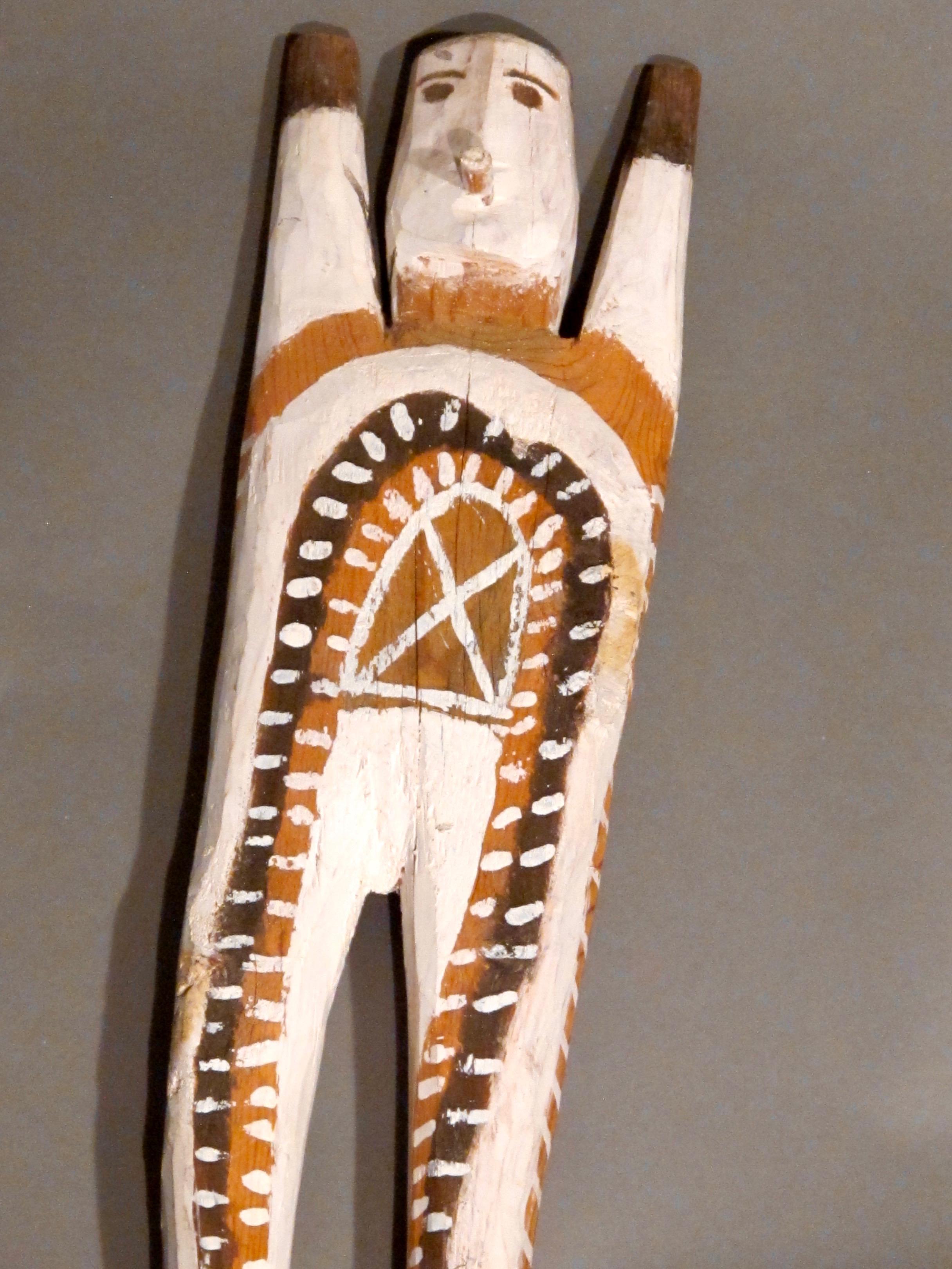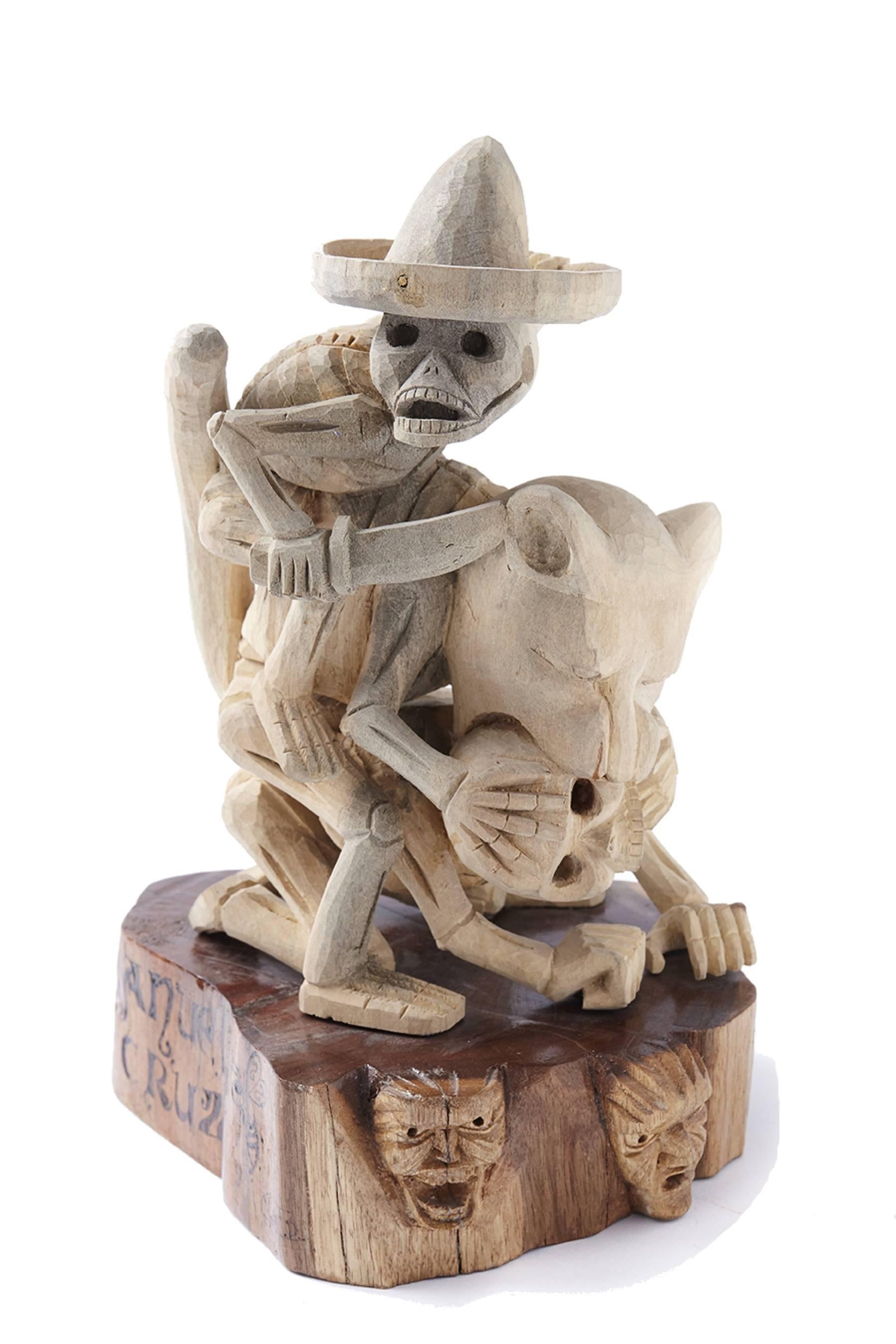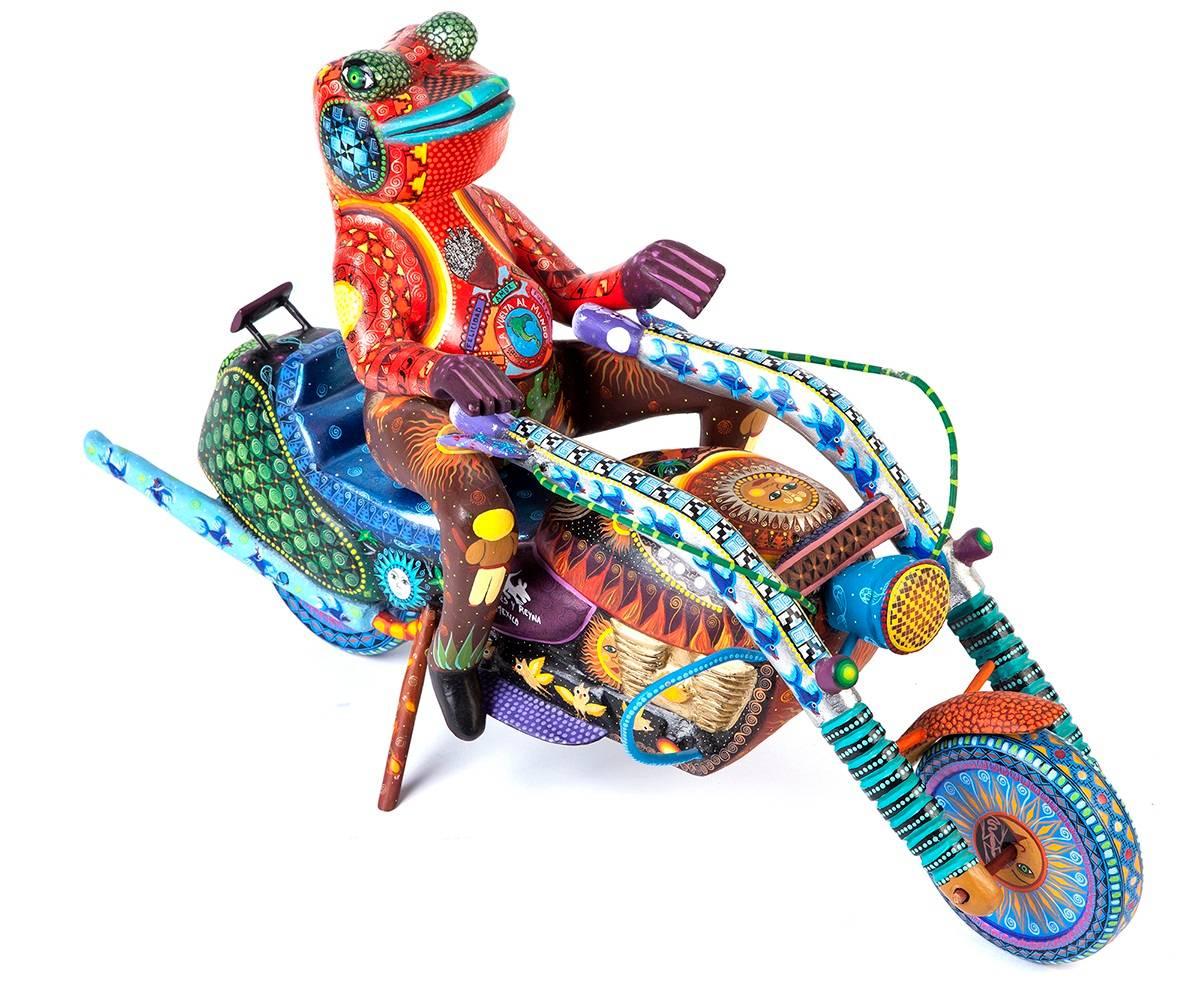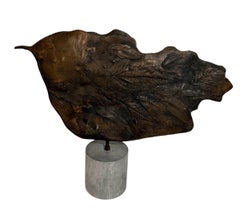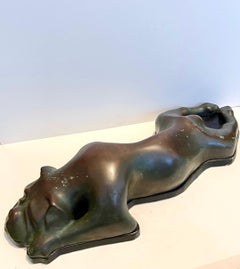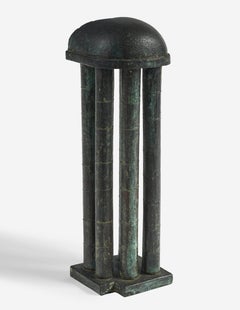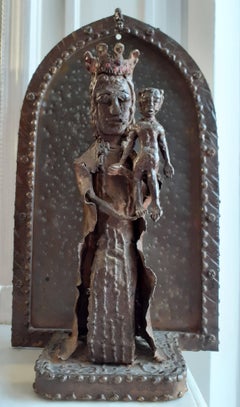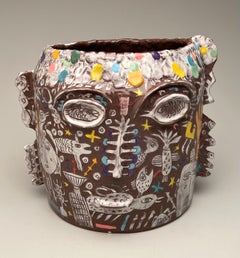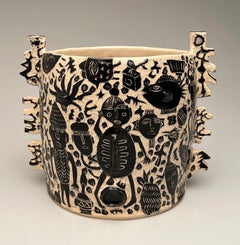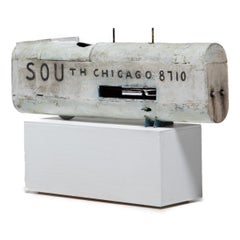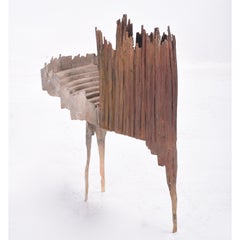
Bronze Architectural Abstract Theater Model French Contemporary Sculpture
Want more images or videos?
Request additional images or videos from the seller
1 of 15
Guillaume CouffignalBronze Architectural Abstract Theater Model French Contemporary Sculpture2014
2014
About the Item
- Creator:Guillaume Couffignal (1964)
- Creation Year:2014
- Dimensions:Height: 13.5 in (34.29 cm)Width: 19.88 in (50.5 cm)Depth: 7.25 in (18.42 cm)
- Medium:
- Movement & Style:
- Period:
- Condition:Good. Please see photos.
- Gallery Location:Surfside, FL
- Reference Number:1stDibs: LU3826301982
About the Seller
4.9
Platinum Seller
Premium sellers with a 4.7+ rating and 24-hour response times
Established in 1995
1stDibs seller since 2014
1,750 sales on 1stDibs
Typical response time: 2 hours
Authenticity Guarantee
In the unlikely event there’s an issue with an item’s authenticity, contact us within 1 year for a full refund. DetailsMoney-Back Guarantee
If your item is not as described, is damaged in transit, or does not arrive, contact us within 7 days for a full refund. Details24-Hour Cancellation
You have a 24-hour grace period in which to reconsider your purchase, with no questions asked.Vetted Professional Sellers
Our world-class sellers must adhere to strict standards for service and quality, maintaining the integrity of our listings.Price-Match Guarantee
If you find that a seller listed the same item for a lower price elsewhere, we’ll match it.Trusted Global Delivery
Our best-in-class carrier network provides specialized shipping options worldwide, including custom delivery.More From This Seller
View AllBronze Architectural Abstract Theater Model French Contemporary Sculpture
Located in Surfside, FL
Guillaume Couffignal (French b. 1964)
Theatre, 2014. Bronze.
19 7/8 x 13 1/2 x 7 1/4 inches.
Signed on the base: Couffignal. Beautiful texture and patina.
Guillaume Couffignal is a ...
Category
2010s Outsider Art Abstract Sculptures
Materials
Bronze
Large Latin American Modernist Bronze Abstract Cuban Master Roberto Estopinan
By Roberto Estopiñan
Located in Surfside, FL
Roberto Estopinan, Cuban, 1920 - 2015
Dimensions: 24.5" wide x 13" high plus 6" high base.
Roberto Estopiñán (1921–2015) was a Cuban American sculptor known for his sculptures of the human form, including political prisoners. Born in Camaguey, Cuba, he lived in the United States for over fifty years. His works are held by major institutions such as the Museum of Modern Art, the Whitney Museum and the Smithsonian Museum of American Art.
Roberto Gabriel Estopinan, a sculptor, draftsman, and printmaker, was born in Havana, Cuba on March 18, 1921. Estopiñán enrolled at the San Alejandro Academy when he was just 14 years old and became the protegé and studio assistant of the sculptor Juan José Sicre. After graduation he traveled first to Mexico, where he met and befriended Francisco Zuniga, and studied Pre-Columbian sculpture. In 1949 he traveled to Europe, visiting England, France and Italy. In these trips he encountered the sculpture of Henry Moore and Marino Marini, and their humanistic yet formal visions would be influential on Estopinan's work. Estopiñán was a pioneer of direct carvings using wood and of welding techniques in Latin America. Throughout the 1950s, Estopiñán received important prizes at various national exhibitions in Havana. In 1953 he was the only semi-finalist from Latin America at the Tate Gallery's international sculpture competition for a Monument to the Unknown Political Prisoner. In 1961, the artist moved to New York, where he resided until 2002.
Roberto Gabriel Estopiñán a Cuban emigre sculptor who emigrated to exile in the United States not long after Fidel Castro’s revolution in 1959, is considered one of Latin America’s most important 20th-century artists. His work, which includes drawings and prints as well as sculptures in wood and bronze, is in the collections of New York’s Museum of Modern Art, the Smithsonian’s American Art Museum, the Art Institute of Chicago, and the Detroit Institute of Art, among many locations. He is best known for his stark, disturbing renderings of political prisoners, the fruit of his own experiences as a dissident under both Castro and his predecessor, the dictator Fulgencio Batista, and for his representations of the female torso that can remind viewers of both classical statuary and the high-modern, abstractly elongated work of Henry Moore.mHe was born in Havana to a father from Asturias in northwest Spain and a mother of African descent. Estopiñán was something of a prodigy. At the age of fourteen, he won the first prize in drawing at the Centro Asturiano, a regional association for Cubans of Asturian descent. Shortly afterward he received special permission to enter the San Alejandro Academy of Fine Arts in Havana. At the school he was mentored first by its director, the painter Armando Menocal (1863-1941), then by the landscape artist Antonio Rodríguez Morey (1872-1967), and finally by Juan José Sicre (1898-1974), regarded as one of Cuba’s greatest sculptors. Sicre, a professor of sculpture at the Academy, had helped introduce European modernist art to Cuba, and from the 1930s through the 1950s had sculpted monumental figures in Havana of José Martí and other Cuban national heroes that stand to this day. Estopiñán was first Sicre’s student, then his assistant, and, finally, his colleague for the next fifty years. After graduating from San Alejandro in 1942, Estopiñán began simultaneously teaching art at the Ceiba del Agua School for young men, assisting Sicre in public art projects and developing his own artistic vision. He also traveled widely, to Mexico, New York, France, and Italy. From the late 1940s through the 1950s his sculpture evolved from an early neoclassical phase under the influence of Maillol to what he defined as “formalist humanism”: emphasizing the abstract beauty of the shapes he sculpted while not abandoning the human figure as the basis of his work. As the 1950s progressed he chose to carve in native Cuban woods...
Category
20th Century Abstract Figurative Sculptures
Materials
Bronze
Large Bronze Modernist Biomorphic Sculpture Sleeping Dog Colin Webster Watson
Located in Surfside, FL
Sculpture Of A Sleeping Dog.
A wonderful and realistic cast bronze signed and numbered.
With beautiful weathered patina
Small edition of 10
Colin Webster-Watson (1926, Palmerston...
Category
1970s Abstract Sculptures
Materials
Bronze
Bronze Architectural Model Sculpture Tempio Bretton Architecture Maquette
Located in Surfside, FL
TEMPIO BRETTON: from the catalogue MONUMENTA, 19th International Sculpture Biennale, Antwerp, Belgium.
Tempio Bretton was created in homage to the celebrated English landscapist Capability Brown for the occasion of an exhibition at Bretton Hall in the Yorkshire Sculpture Park , a park in the style of the great master of English garden design. The inclusion in the English garden of a temple ruin, or "eye-catcher," (architectural folly) was used to draw the eye and mind to a focus in time and space, present the beholder with an immediate relationship to an historic past made new within his or her own surroundings, and create a depth of space never before seen in garden design.
I took the idea of the temple ruin eye-catcher and reduced it to a scale at the point where architecture and sculpture merged. Tempio Bretton is not capacious enough to walk into, yet it is considerably larger than a man.
One view of it presents a knot of golden columns clustered together, topped by a dome shape. The only clue from this side to the temple's non-conformity to historic principle is a sharp notch cut into the square base.
Viewed from the opposite side, the cluster of columns capped by an angular top opens up as if to welcome someone in, yet the mysterious core is still impenetrable. These contradictions articulate a confrontation between past and present, and an exciting truth. The past is always at the heart of our constructions in the present.
Walter Dusenbery (born September 21, 1939 in Alameda, California) is an American sculptor. He attended the San Francisco Art Institute, earned an MFA from California College of Arts and Crafts, and then studied in Japan and Italy under Isamu Noguchi. He also held teaching positions at Harvard University and University of California, Berkeley Graduate School of Design. From 1971 to 1988, he lived both in Pietrasanta,Italy, and in Little Italy, New York City. Dusenbery's preferred material is stone, particularly travertine or granite. Dusenbery has a particular interest in adding sculpture to public places, such as federal buildings, to humanize the space, but in 1988, he assembled a show of small, entirely hand-carved alabaster sculptures, called "Walter Dusenbery, The Personal Side," at the Fendrick Gallery in Washington, D.C.. In 1977, Dusenbery created Pedogna, on permanent loan from The Metropolitan Museum of Art to Landmarks, the public art program of The University of Texas at Austin.
That same year, 1988, he was awarded a large commission for the Fulton County Building Atrium in Atlanta, Georgia. The commission was for three fountains and related structures over three stories in height, designed for informal and ceremonial public events, Limestone, marble, granite and travertine fountains, pavilions, seating and meeting areas, performance and concert platforms, staircases and planters for hanging gardens. After completion of the "Atlantacropolis," Dusenbery withdrew from the gallery world and focused his energy on site-specific commissions. (like the landscape works of Maya Lin and Beverly Pepper) Seeking a large-scale stone studio for projects closer to home, he discovered there were none. In 1995, he approached sculptor and patron of sculpture J. Seward Johnson Jr. with the idea of creating a state-of-the-art stone-carving studio, so that American sculptors would not have to travel abroad to realize their work. Johnson agreed to fund such a facility, if Dusenbery would direct it. In 1996, Dusenbery designed the facility for the Stone Division at Johnson Atelier Technical Institute of Sculpture, and was its first director. The facility was situated in "a building resembling an airplane hangar," The studio offered the ability to digitally scan three-dimensional forms. The Stone Division was a success and attracted a strong group of sculptors: Magdalena Abakanowicz, Lawrence Argent, Barry X Ball...
Category
20th Century American Modern Abstract Sculptures
Materials
Bronze
Liberty vs Slavery Van Loen Bronze Abstract Chess Set Modernist Museum Sculpture
By Alfred Van Loen
Located in Surfside, FL
Alfred Van Loen signed 32 piece chess set. In heavy solid bronze.
Rare Chess Game: Liberty versus Slavery
Dimensions:
a) Joy-Tenderness H. 6 3/16 in. a...
Category
1960s Expressionist Abstract Sculptures
Materials
Bronze
Bronze Sculpture Abstract Brutalist Goat or Ram WPA Artist Mounted on Base
By Benedict Michael Tatti
Located in Surfside, FL
Benedict Tatti (1917-1993) worked in New York city as a sculptor, painter, educator, and video artist. He studied stone and wood carving under Louis Slobodkin at the Roerich Museum. He later attended the Leonardo da Vinci School of Art studying under Attilio Piccirelli. In l939 he taught adult classes with the Teachers Project of the WPA and attended the Art Students League for three and a half years on full scholarship. He studied under William Zorach and Ossip Zadkine and later became Zorach’s assistant. Later in his career, he attended the Hans Hofmann School of Fine Arts. During World War II, Tatti served in the United States Army Air Force, where he spent three years assigned to variety of projects. In 1948, Benedict Tatti married Adele Rosenberg in New York City.
Throughout his career, Tatti continuously experimented with various media. From 1952-1963, Tatti executed sculptural models of architectural and consumer products for the industrial designers, Raymond Loewy Associates; later he became a color consultant for the firm. In the 1960s, influenced by the Abstract Expressionists, Tatti turned from carving directly in wood and stone to creating assemblage architecture sculptures, using bronze metal and other industrial materials.
He was included in the important show "Aspects de la Sculpture Americaine", at Galerie Claude Bernard Paris, France, in October 1960 along with Ibram Lassaw, Theodore Roszak, David Smith, Louise Bourgeois, Danese Corey, Dorothy Dehner, Lin Emery, Lily Ente, David Hayes, Louise Nevelson, Tony Rosenthal, Richard Stankiewicz, Sam Szafran...
Category
Mid-20th Century Abstract Expressionist Abstract Sculptures
Materials
Bronze
You May Also Like
Outsider artist singular virgin and child art brut sculpture mother and child
Located in Norwich, GB
An extraordinarily moving piece by an outsider artist who must have spent many a day conceiving, cutting, hammering, soldering and welding this stunning metal group made of tin and iron. The result is something completely individualistic, which at the same time recalls early medieval...
Category
Mid-20th Century Outsider Art Figurative Sculptures
Materials
Metal
"Look At Me" Decorative Abstract Figurative Clay Sculpture
Located in East Quogue, NY
Yeonsoo Kim, "Look at Me," Colorful red clay vessel, underglaze, 13 x 11 × 13 inches.
Korean ceramic artist Yeonsoo Kim masterfully blends the ancient Onggi tradition with bold, con...
Category
Early 2000s Outsider Art Abstract Sculptures
Materials
Clay, Slip
"Be Yourself" Decorative Monochromatice Abstract Figurative Clay Sculpture
Located in East Quogue, NY
Yeonsoo Kim, "Be Yourself," Monochromatic black and white clay vessel, White stoneware, black underglaze, 11.5 × 12.5 × 13 inches.
Korean ceramic artist Yeonsoo Kim masterfully blen...
Category
Early 2000s Outsider Art Abstract Sculptures
Materials
Stoneware, Underglaze
"Pexto Car, " Mixed-Media Sculpture
Located in Chicago, IL
To Chicago-based artist Patrick Fitzgerald, his miniature car sculptures are a means of traveling through time. Born from a fascination with the soap box derby cars of his youth, eac...
Category
21st Century and Contemporary Outsider Art Figurative Sculptures
Materials
Wood, Paper, Mixed Media, Oil, Acrylic
Vendedor de pájaros - Bird seller - Mexican Folk Art Cactus Fine Art
By Taller Alfonso Castillo Orta
Located in Jesus del Monte, MX
Vendedor de pájaros - Bird seller
Made with natural clay, copper wire and polychrome painting. Hand-modeled technique and cooked in an oven.
LISTING
===================================
1 Ceramic Sculpture of a Bird seller
===================================
DETAILS
===================================
Time of Preparation: 2.5 months
Made: Izuca de Matamoros, Puebla, México.
Dimensions: 8" x 10" x 5" in or 20 x 25 x 13 cm
Artisan: Taller Alfonso Castillo Orta...
Category
2010s Folk Art Figurative Sculptures
Materials
Copper
Familia del Mezcal - Mezcal Family - Mexican Folk Art Cactus Fine Art
By Taller Alfonso Castillo Orta
Located in Jesus del Monte, MX
Familia del Mezcal - Mezcal Family
Made with natural clay, copper wire and polychrome painting. Hand-modeled technique and cooked in an oven.
LISTING
===================================
1 Ceramic Sculpture of a Mezcal Family
===================================
DETAILS
===================================
Time of Preparation: 2.5 months
Made: Izuca de Matamoros, Puebla, México.
Dimensions: 7" x 8" x 5" in or 17" x 20" x 13 cm
Artisan: Taller Alfonso Castillo Orta...
Category
2010s Folk Art Figurative Sculptures
Materials
Copper
